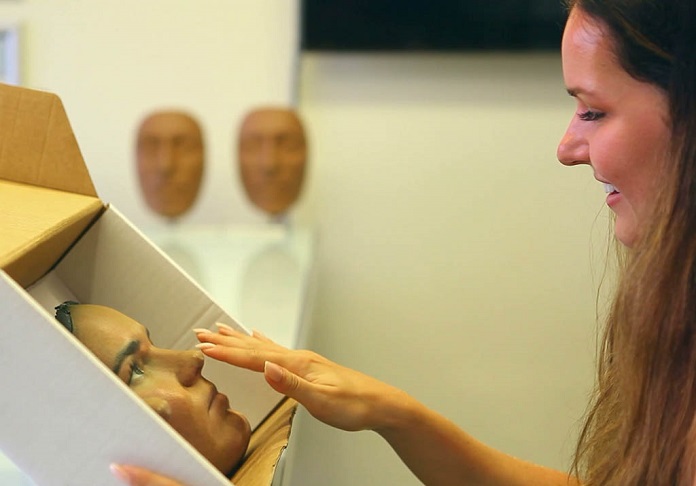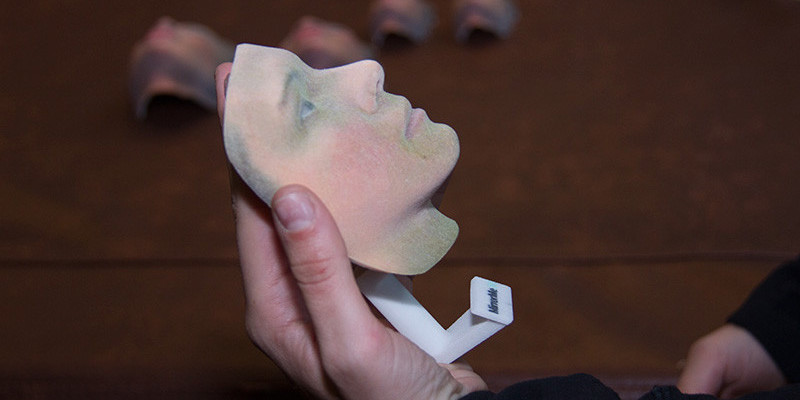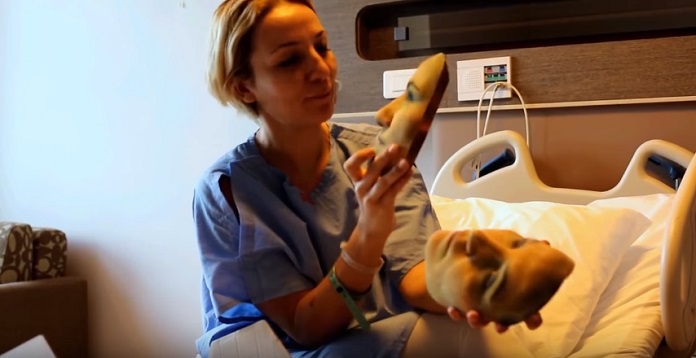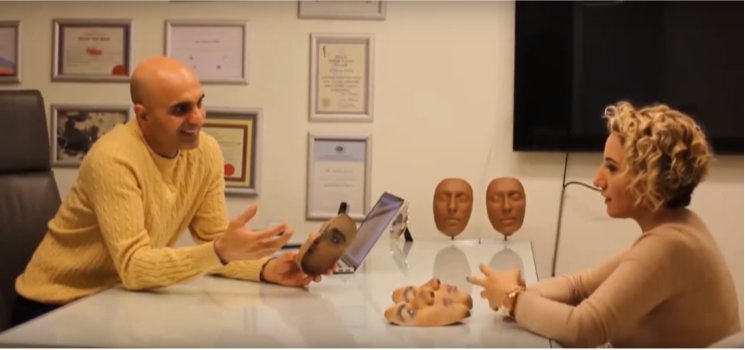3D printed models are allowing plastic surgeons to more accurately plan surgery and help align patient and surgeon goals. Custom 3D printed implants are on the horizon.
Until recently, plastic surgery consultations went something like this: The patient would arrive at their surgeon’s practice with a few photos in-hand and a basic idea of what they wanted. The surgeon would listen and then lay out the options. Back then, surgeons often relied on two-dimensional photos to assess a patient’s baseline and/or potential surgical results.
All of that has changed in the 21st century. Plastic surgeons now rely extensively on three-dimensional computer imaging. Some practices not only use 3D printed models as reference tools during surgery, but as mockups of the patient’s postoperative face they can actually hold and touch.
Thanks to recent advancements in digital technology, both the size and cost of 3D printers has plummeted over the past few years, while the models being produced now are now available in full color. As a result, the use of 3D printers among plastic surgeons will soon be ubiquitous.
But that’s just the tip of the iceberg. Before long, we should see 3D custom facial implants hit the market. The potential for further application of 3D printing in plastic surgery is enormous.
How is 3D Printing Used in Plastic Surgery?
Currently, plastic surgeons are using 3D modelling in a few different ways. One application that’s been gaining traction lately is the creation of patient-specific 3D models for the operating room. This is a potentially big improvement over earlier-generation methods, which largely relied on standard 2D photographs.
“3D printing offers surgeons far more viewpoints on the table, is 1:1 scale with the patient so understanding form is more straightforward, and provides surgeons greater detail of the patient’s anatomy,” says Jordan Mills, Executive Vice President of MirrorMe3D, a 3D printing company whose suite of products ranges from full-color soft tissue models to sterile guides. “We have surgeons who have used our products for major facial reconstructive cases,” continues Mill. “Our models help doctors with cleft cases, revision cases and orthognathic cases.”
Through a recent partnership with 3D Systems Corporation and their color printing solutions with the mineral gypsum, MirrorMe3D can produce and deliver models in as quickly as one week.
Another company involved in the production of 3D models for plastic surgeons was Ireland based Mcor Technologies. Founded by brothers Dr. Conor MacCormack and Fintan MacCormack, Mcor manufactures full-color paper-based 3D printers that can be used right at the surgeon’s practice. “The models are used as a baseline to discuss with the patient, thus enhancing the doctor-patient relationship,” says Deirdre MacCormack, Mcor’s Chief Marketing Officer. “Instead of pointing at pictures, you can show the exact problem and the doctor can use the model in the operating room and reference it during the surgery.”
Dr. Yakup Avşar, founder of AVSAR Aesthetic Surgery Clinic in Istanbul, Turkey, uses MCor’s full-color 3D printer because of its color capability, low operating cost and environmentally-friendly process. Dr. Avşar used to sculpt before-and-after masks of patients’ faces by hand but found the process too time-consuming. Plus, the masks weren’t realistic enough for him to accurately demonstrate to patients the alterations he would be making during surgery. Thus the switch to 3D printing.

Here’s how it works. During the initial patient consultation Dr. Avşar does a 3D scan of the patient’s face using a handheld 3D scanner. Next, he employs modeling software to create the digital 3D model produced by the scan in preparation for 3D printing. He then tweaks the data from the scan to create an image of what the patient’s face might look like following surgery.
Dr. Avşar sends both digital 3D images to the Mcor 3D printer in order to generate life-size, full-color before-and-after masks of the patient’s face. Then he reviews and discusses the masks with the patient and makes any necessary modifications to the post-op mask until he and the patient have agreed on the ideal outcome.
Mcor’s printers are also used by maxillofacial surgeons to produce surgical guides. “Without 3D physical models to work from, surgeons would be forced to rely on a time-consuming trial and error system to shape the metal implants, risking potential tissue damage. Mcor models can also be sterilized, which means they can be brought into the theatre, further speeding up the process,” says MacCormack.
One group that relies on 3D printed surgical guides is the maxillofacial surgical team at the Cliniques universitaires Saint-Luc, Université catholique de Louvain (UCL) in Belgium. By using Mcor’s 3D printing technology they’ve been able to recoup countless hours they’d otherwise have lost following traditional surgical procedures. After scanning a patient’s bones, the surgeons can simply press a button and produce a full-size 3D physical model to use as a surgical guide.
The accuracy of the model means it can be used to create metal inserts that are placed along the patient’s residual bone. The inserts range in form — anything from a plate to support the mandible to titanium mesh for use in reconstructing an eye socket.
“With each procedure, we easily win an hour in the operating room, and that’s a major benefit for the patient,” Professor Raphael Olszewski, a surgeon and head of the university’s Oral and Maxillofacial Surgery research lab (OMFS Lab, UCL) recently noted in a press release. “We open the patient up, slide in the device, check the fit and start the patient’s recovery.”
While the Belgian team uses these models for maxillofacial surgeries, the technology also has obvious applications in plastic surgery, where alterations to bone and cartilage are an element of procedures like rhinoplasty, for example, or when implants are used in a procedure like chin augmentation.
“Before” and “After” 3D Models for Patients
3D printing is also incorporated by some plastic surgeons to create “before” and “after” models which can be shown to patients during consultations. One potential drawback to this, however, is if surgeons fail to stress that these models are not a cast-in-stone guarantee of what their final results will look like, patients could hold unrealistic expectations for the final outcome. Unlike 3D printed models, which are generated with highly advanced technology, plastic surgery is performed by a human being handling sensitive structures and tissues. And a patient’s healing, including the duration of the healing process, is impossible to predict with exactitude.
This risk is not lost on the manufacturers of these devices. “Our tools are developed with the surgeon at top of mind,” says Mills, of MirrorMe3D. “We want to provide them with better reference tools, which result in better outcomes. While we do have many surgeons who are very comfortable showing patients the models during pre-op to explain the procedure and later in post-op as a reminder of the baseline or simulation, we have just as many surgeons who use our products primarily as an intraoperative tool, without using them during consultations.”
McCor’s Deirdre MacCormack is similarly cautious. “The real value is the ability to provide patients with a 3D printed model that offers realistic insight as to how they will look after surgery. It does set high expectations, however, even when doctors stress that there’s no guarantee the surgery will provide the exact same results. Unfortunately, surgery is not an exact science.”
The Future of 3D Printing in Plastic Surgery
There is immense potential for further innovation in 3D printing for the field of plastic surgery. Mills points out that not only is 3D printing a natural evolution for imaging technology and surgical tools, it also has the potential to significantly enhance the surgical process.
Deirdre MacCormack believes we could see 3D printing become an essential office-based tool in plastic surgery to assist in preoperative planning, developing intraoperative guidance tools, and teaching patients and surgical trainees, along with producing patient-specific prosthetics in everyday surgical practice. “Overall, I think rather than replacing the skill of an excellent plastic surgeon, 3D printers will provide another tool they can use in complex cases to take the art of what they do to another level,” she says.
And while so far Mcor’s and MirrorMe3D’s printing technologies have both been used primarily for prototyping, Mcor’s has also been used to print temporary custom implants. In other medical specialties 3D-printed implants are already widely used. For example, orthopedic surgeons now depend heavily on 3D printing to construct replacements for patients’ worn out or defective bones. The main obstacle in plastic surgery is the fact that the implants will need to be customized. At present, only a few printed, custom implants have received clearance from the Food and Drug Administration (FDA), none having to do with plastic surgery. But you can rest assured it’s only a matter of time before similar technologies are developed for use in plastic surgery.
Credits, cover photo: MirrorMe3D











